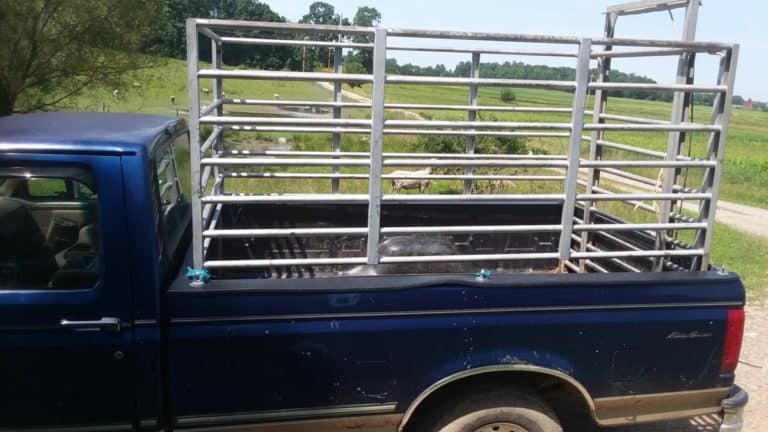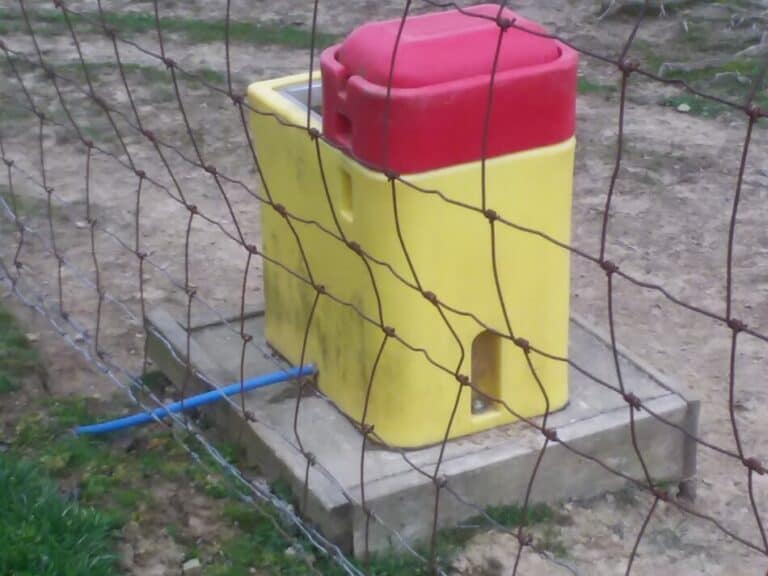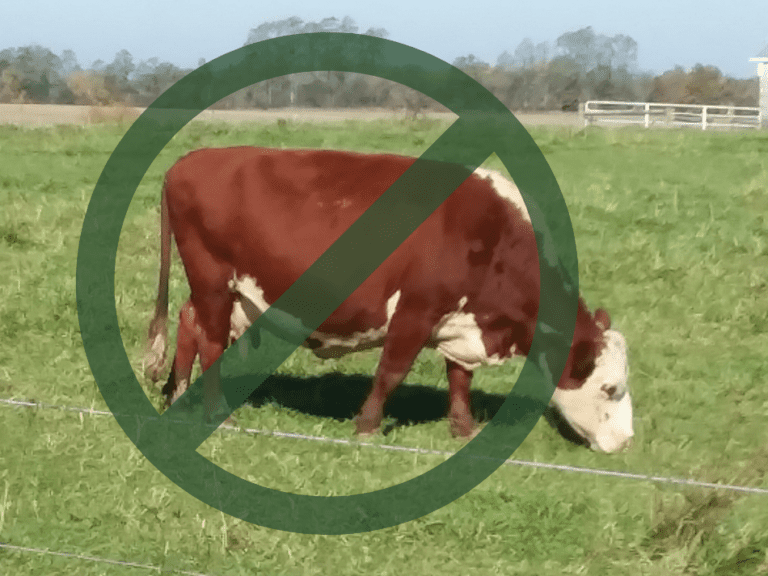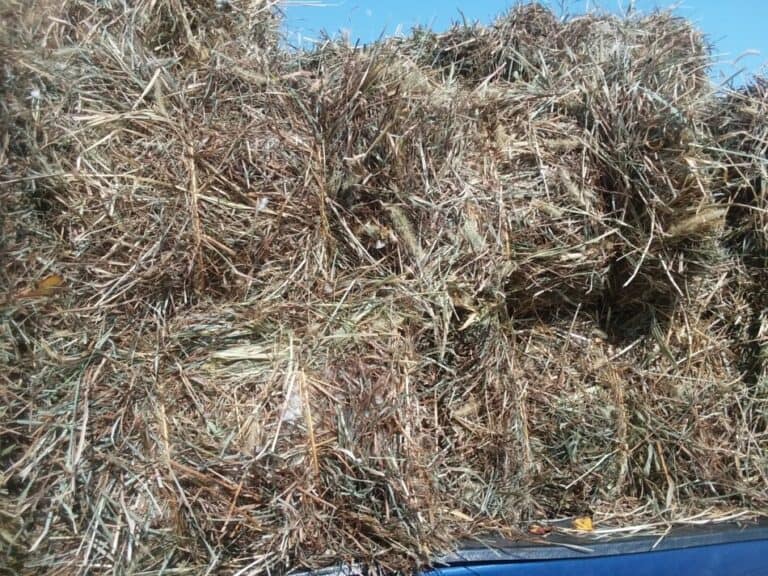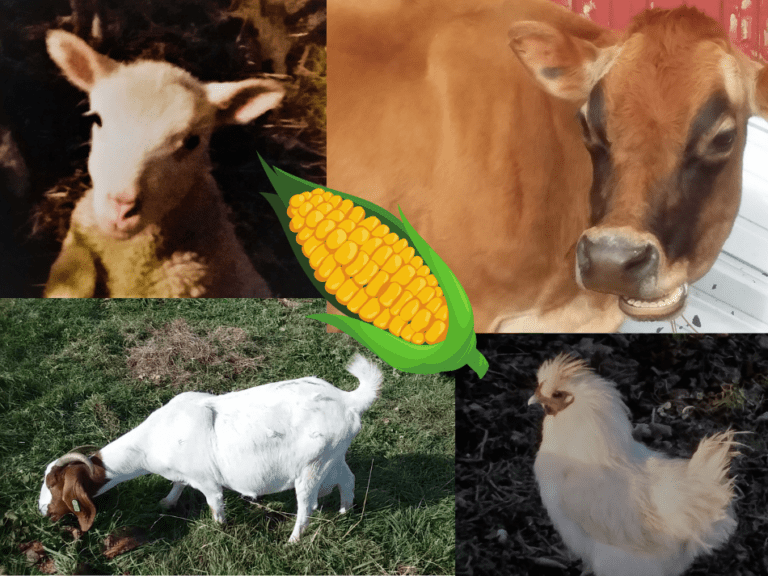What Is 1st Cutting Hay?
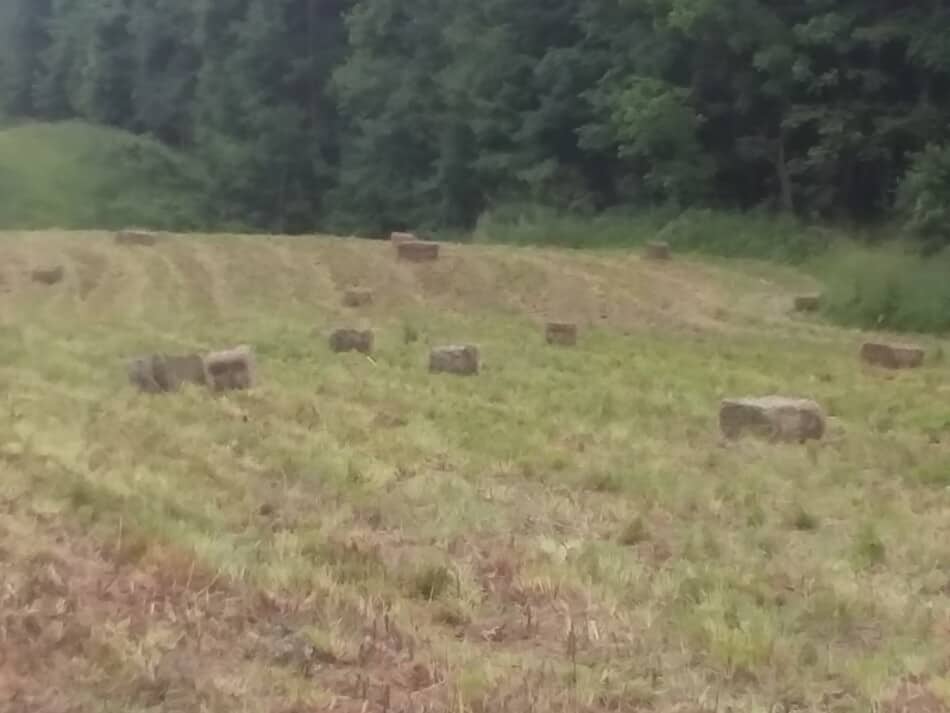
Figuring out what hay to feed your animals can be challenging, especially for the beginner. What is first cutting hay and how can you tell if it’s good?
First cutting hay is the initial crop of hay off of a hay field for the year.
Chances are if you are buying hay and the cutting is not specified, you are getting first cutting hay. But, what does that mean?
Is Making Your Own Hay Worth It? gives you a start on a budget to decide if getting set up for doing your own hay makes sense.
| Checklist For Great First Cutting Hay | Yes! | No! |
| Smells great (break open a bale and see) | Yes | |
| Good color (nice and green, not yellow or tan) | Yes | |
| Seed heads (easy to see seed heads = low quality hay) | No | |
| Mold (would have failed the smell test, as well) | No |
Key points to know:
- all hay crops have a first cutting
- first cutting is the coarsest cutting of hay
- first cutting is challenging to make well
- well made first cutting is super hay
First cutting hay is made earliest in the year
Simply put, first cutting hay is the first round of hay made off of a field for the year.
It doesn’t matter what type of hay is being grown, alfalfa, timothy, orchard grass, etc., all have a first cutting.
Number of hay cuttings depends on area
Fields that are harvested for hay may not have additional cuttings, this depends upon location and weather.
Dry areas of the country that do not irrigate would be places that only have one cutting of hay per year.
Here in Ohio, we normally get three cuttings per field and sometimes four. I have seen farmers advertise fifth cutting hay, but that is unusual.
1st Or 2nd Cutting? goes over the specific differences between first and second cutting hay.

First cutting is the coarsest hay
The first cutting off of any plant will be more coarse than the following cuttings.
This coarseness or fibrousness is what makes a hay useful for moving along an animals digestive tract and keeping their digestive system in top shape.
The chewiness is also what helps a ruminant’s (sheep, goats, cattle) digestive system work right. Exclusively fine material is not what adult ruminants are built to eat.
If you need to feed a finer stemmed hay for younger stock, like for lambs or calves, look into a second cutting hay, instead.
Well made first cutting hay is good hay
Well made first cutting is great hay. We love it, since it’s so versatile to feed. Any hay eater loves it!
Notice the “well made” part, that’s key. Poorly made first cutting is a completely different story.
Well made first cutting hay has color and great smell
How can you tell if the first cutting you are looking at is good? Break open a bale and see what’s really inside.
Do you get a wonderful hay smell or is is musty? How’s the color? You’re looking for green, not bleached out yellow.
Now look for seed heads. Do you see them? If so, the hay is not made on time and will not be of the highest quality.
Especially if the seed heads are sticking out on a long thin stem waving about, that hay was made late!
Don’t buy it unless you are using it for bedding.
A note on color of hay: compare the color of hay to other hay of the same kind. Meaning compare alfalfa to alfalfa and timothy to timothy.
First cutting hay is the most plentiful
The first cutting of hay from a field is the largest volume of hay that field will make per cutting for the year.
This means that first cutting is also the most prevalent hay that is available for sale, simply because it has the most tonnage.
First cutting hay is great for maintenance animals
Well made first cutting hay is great for any hay eater that is on a maintenance diet, meaning you are trying to maintain the weight and condition of the animal.
Any livestock with higher energy needs, like lactation or fast growth, will probably need a second cutting hay, instead.
Ask for “horse hay” if you are feeding sheep or goats
A note to anyone feeding sheep and goats, for some reason sheep and goats are viewed as not needing high quality hay, especially goats!
This isn’t true, but it’s what people who don’t raise sheep and goats think.
Ask for “horse hay” when you are trying to determine the quality of the first cutting hay. This seems to get people in the mindset of quality hay for your animals.
First cutting hay can be low quality
The reason that first cutting hay can be seen as less desirable for livestock owners is when the hay is made late or gets rained on. Now it is lower in feed value.
Well made first cutting is a wonderful hay. Late made first cutting (with the seed heads easily seen) is better used as bedding or mulch.
Timing Is Everything is an article on hay from the University Of Georgia Extension giving you more specifics on what makes great hay.
The challenge of making great first cutting hay is weather
In the spring and early summer the weather is generally not cooperative as far as hay making goes.
Rains that pop up out of nowhere or just a really wet year will make getting high quality hay made a challenge.
Not only do the hay farmer’s need the dry days to make the hay, they also need the dry days at the time when the plants are at their most nutritious.
This is a tough combination to get for some years, but when it comes together you’ll get super hay for your animals.
Choose High Quality Hay gives you the specific things to look for to make sure you are getting great hay for your money.
